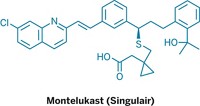Advertisement
Grab your lab coat. Let's get started
Welcome!
Welcome!
Create an account below to get 6 C&EN articles per month, receive newsletters and more - all free.
It seems this is your first time logging in online. Please enter the following information to continue.
As an ACS member you automatically get access to this site. All we need is few more details to create your reading experience.
Not you? Sign in with a different account.
Not you? Sign in with a different account.
ERROR 1
ERROR 1
ERROR 2
ERROR 2
ERROR 2
ERROR 2
ERROR 2
Password and Confirm password must match.
If you have an ACS member number, please enter it here so we can link this account to your membership. (optional)
ERROR 2
ACS values your privacy. By submitting your information, you are gaining access to C&EN and subscribing to our weekly newsletter. We use the information you provide to make your reading experience better, and we will never sell your data to third party members.
Biological Chemistry
Putting An End To One Type Of Dwarfism
Decoy version of a protein growth factor helps genetically modified dwarf mice grow to normal size
by Craig Bettenhausen
September 23, 2013
| A version of this story appeared in
Volume 91, Issue 38
Achondroplasia, a type of dwarfism, is a rare genetic disorder characterized by short limbs, a normal-sized torso, and a slightly enlarged head. In severe cases, deformations in the head and spine can lead to serious medical complications. The condition is a result of a single mutation in the gene coding for fibroblast growth factor receptor 3 (FGFR3), a protein that is part of a signaling cascade that eventually results in certain cells being replaced by bone. FGFR3 binds to and is activated by the protein FGF, but the mutation alters FGFR3 and slows elimination of the FGF-FGFR3 complex, causing a detrimentally prolonged signal that delays maturation of the cells. Elvire Gouze of the French National Institute of Health & Medical Research and coworkers developed a soluble form of FGFR3 to act as a decoy for FGF. In mice engineered to have achondroplasia, postnatal injections of the decoy resulted in normal stature and a significant decrease in other complications (Sci. Transl. Med. 2013, DOI: 10.1126/scitranslmed.3006247). The researchers observed no signs of toxicity or ill reproductive effects. The team hopes the approach can eventually be used to treat human patients to normalize bone growth.




Join the conversation
Contact the reporter
Submit a Letter to the Editor for publication
Engage with us on Twitter